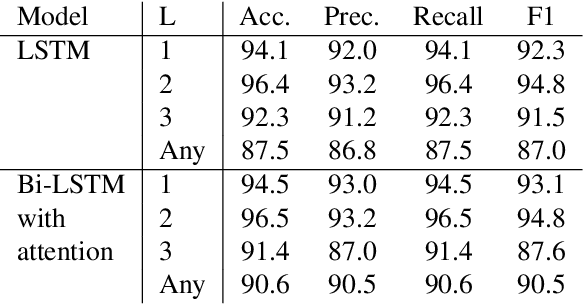Rachit Pabreja
Interpreting Criminal Charge Prediction and Its Algorithmic Bias via Quantum-Inspired Complex Valued Networks
Jul 14, 2021



Abstract:While predictive policing has become increasingly common in assisting with decisions in the criminal justice system, the use of these results is still controversial. Some software based on deep learning lacks accuracy (e.g., in F-1), and importantly many decision processes are not transparent, causing doubt about decision bias, such as perceived racial and age disparities. This paper addresses bias issues with post-hoc explanations to provide a trustable prediction of whether a person will receive future criminal charges given one's previous criminal records by learning temporal behavior patterns over twenty years. Bi-LSTM relieves the vanishing gradient problem, attentional mechanisms allow learning and interpretation of feature importance, and complex-valued networks inspired quantum physics to facilitate a certain level of transparency in modeling the decision process. Our approach shows a consistent and reliable prediction precision and recall on a real-life dataset. Our analysis of the importance of each input feature shows the critical causal impact on decision-making, suggesting that criminal histories are statistically significant factors, while identifiers, such as race and age, are not. Finally, our algorithm indicates that a suspect tends to rather than suddenly increase crime severity level over time gradually.
 Add to Chrome
Add to Chrome Add to Firefox
Add to Firefox Add to Edge
Add to Edge